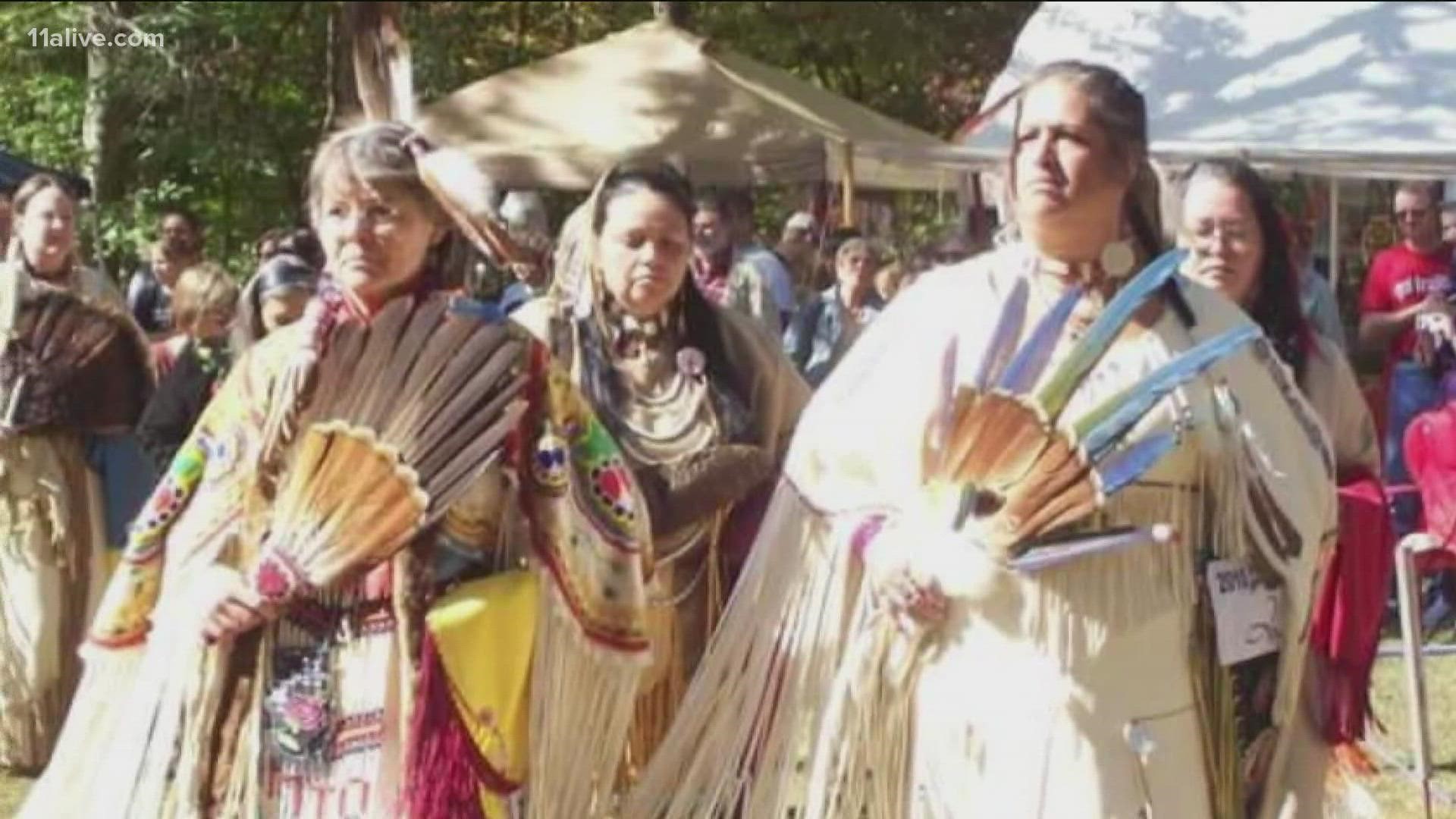ATLANTA — Native American Heritage Day is Friday, a holiday meant to recognize the cultures and contributions of Indigenous peoples in the U.S. as well as reflect on the painful associations the Thanksgiving holiday brings for Native Americans.
In Georgia, there are a number of historical sites that mark the long history of Indigenous people in this state before the arrival of European settlers.
While dozens of tribes and tribal bands trace their roots in Georgia, the two largest are generally considered the Cherokee and Muscogee, and they are responsible for sites in Georgia that in some cases date back thousands of years.
Ocmulgee Mounds
Located on the border of Macon, the Ocmulgee Mounds National Historical Park is one of the oldest and most significant Native American sites in the country, and may soon become a National Park.
The Ocmulgee Mounds have been the site of human habitation for 17,000 years, with the first arrival of humans believed to be during the last Ice Age.
At its heart is the Earth Lodge, which was reconstructed in part in the 1930s. Its original clay floor though remains intact, and has been carbon dated back to the year 1015, making it one of the oldest surviving markers of human activity in the country.
It was also the site of the largest archaeological dig in U.S. history, uncovering 2.5 million artifacts in the 1930s.
Etowah Mounds
This mounds site is smaller than the one in Macon, but closer for Atlanta residents to visit, being located just outside Cartersville.
It features six mounds as well as what was a plaza and village area and is considered the "most intact Mississippian culture site in the southeastern United States."
According to the Georgia Department of Natural Resources, the people at the Etowah Mounds "developed a high level of artistry and craftsmanship, built a ceremonial complex of ritual and burial mounds, hunted, farmed, fished, and controlled trade along the Etowah River."
Track Rock
This site features ancient petroglyphs, or carvings, in the Chattahoochee-Oconee National Forest in Union County.
The site is reachable by hike, and is said to feature carvings that "resemble animal and bird tracks, crosses, circles and human footprints."
There are estimated to be more than 100 symbols carved into several soapstone boulders at the site.
Tragically, some of the carvings were reportedly vandalized last year, making it especially important to respect the boundaries and significant of this site if you visit.
Rock Eagle
This site in Putnam County features a remarkably well-preserved, giant human-made rock formation depicting an eagle.
It's believed to be 1,000-3,000 years old, predating even the early Mississipian culture.
For more Native sites of significance in Georgia, you can see the Explore Georgia website.

